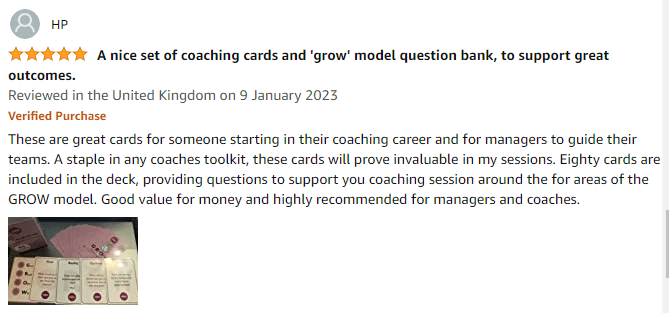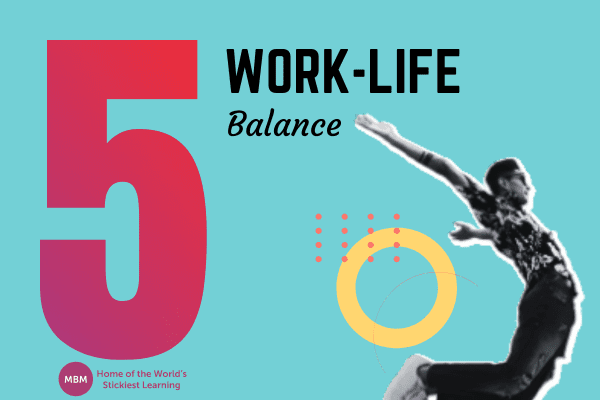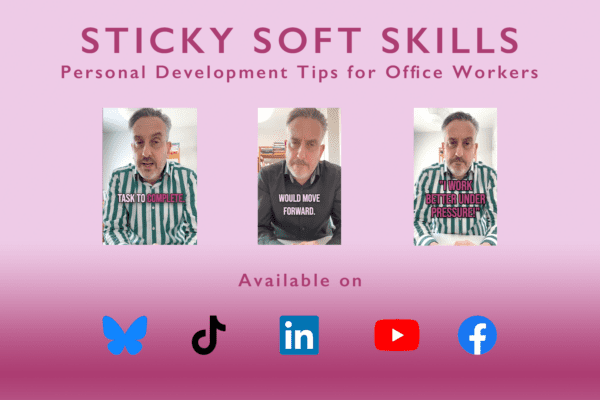The Secret to Reducing Staff Turnover is Not ‘Reverse Exit’ Doors
We can divide staff turnover into two categories: voluntary, and involuntary. And the incidence of each type may differ from one workplace to the next.
But what causes staff turnover?
Reasons for resigning may include a change of career, relocation, failing health, or retirement. But many employees leave their workplaces for other reasons, too.
These reasons usually include more recognition, increased opportunities, and better pay.
Both types of staff turnover are influenced by factors under your control. And reducing a high staff turnover rate will save you the time and money needed for recruiting replacement staff.
Furthermore, the positive changes introduced will not only attract top talent but make them less likely to leave.
Steps to Minimise Staff Turnover and Ensuring Sustainable Growth for Large Enterprises
When employees leave the company because of retrenchment or dismissal, this is an involuntary turnover.
The reasons for dismissal may include poor performance or a failure to complete work duties. Some staff may have a disregard for company policies and even recurring misconduct.
When employees retire or resign, this is voluntary turnover. Life changes or personal problems may occasionally be the reason they leave. But, many times, it’s because they are not engaged, motivated, or challenged at work.
All in all, businesses should hire the right candidates from the start.
There are also ways to stop current employees from leaving. For example, you can provide fair pay, top perks, and a positive work environment.
And remember: people are not stagnant. Providing growth opportunities will further reduce staff turnover.
So here are the top ways to reduce staff turnover in your organisation.
Step 1: Hiring the Right Fit

Finding the right people for the right jobs is one of the top benefits of effective human resource management. Hiring the right fit is crucial. This is because the wrong person can lead to incomplete work duties and a lack of engagement.
Both voluntary and involuntary turnover then become possible.
So how do you determine who’s got the right fit for a particular post Much of this depends on the job, as well as the company.
Did you give enough detail in your job description to attract the desired person? Be short, clear, and to the point, and you’ll get the right candidate.
Will they be accessing sensitive company data while doing their duties? Does the post involve restricted access to top-level information? If so, then extra screening and background checks are essential.
Does the job require a high level of technical skill or academic qualification? Is it the type of job that years of experience would make easier? Check they have the necessary qualifications, skills, and experience.
First impressions really are important. The first interview should give you an idea of whether they’ll be a good fit for your company.
Some applicants will be a better cultural fit than others. This will make it easier for them to adjust to your company culture.
Our Bonus Actionable Tip:
Make ambassadors of your staff. Ask them to write reviews for your careers page, and also for job posting sites. Stress that this participation is voluntary.
As a result, potential employees will get a better picture of what it’s like to work for the company. You’ll also attract the right fit for your enterprise.
This performs another very useful function as well. It gives you a better idea of how engaged your current employees are.
If you don’t know what your net promoter score is, this can give a clue to that metric.
Sticky Learning ® is 7 times more effective than 1-day training courses. Plus, you will get a Chain of Evidence proving your Return on Investment. Discover soft skills training that changes behaviours long term.

Step 2: Competitive Compensation and Benefits

If the same job pays more elsewhere, employees will likely leave. This can happen even if they are otherwise happy in the company. Some employees will leave even if they enjoy positive relationships at work. When it comes to staff turnover, the importance of fair compensation cannot be underestimated.
Research industry standards and market rates for the positions being offered. You should align yourself with these norms, or risk losing top talent.
Even when your salary package is on par with your competitors, employees might still leave. This is because competitors may offer extra benefits and perks that candidates would find attractive.
Get your HR team together and discuss ways to implement perks that will appeal to your staff.
Our Bonus Actionable Tip:
Create a perks package that aligns with the needs of your particular workforce.
What are the needs that your employees have?
Well, examples of this could be:
- Help with childcare while they’re at work.
- Days off for family reasons like a child’s graduation ceremony.
- Or even a session with a counsellor for burnt-out executives.
Whatever perks or benefits you offer, revise this regularly. As staff come and go, the needs of your workforce may change.
Adapt this benefits schedule to stay in step with your changing staff. You should also remember that people’s needs change according to their lifestyle. Adapt your employees’ benefits according to their lifestyle needs.
Step 3: Employee Development and Growth Opportunities

Another big reason why employees leave is a lack of career growth opportunities.
Your existing staff is the best talent pool to be tapping into for leadership succession roles. It’s important to make this a possibility for them.
Provide training courses and career development programs. Try to include upskilling workshops, as well.
Also, you should invite existing employees to apply for management positions. This is better than recruiting outside your company. It should be easy to identify your most promising candidates for promotions.
Implement a mentorship and coaching program and then make it available to all employees. Sometimes, all we need is that extra dose of motivation, encouragement, and guidance.
Supportive leadership is often the key to career growth and development.
When you set your employees up for success, it proves that you value them. And employees who feel valued are less likely to leave.

Our Bonus Actionable Tip:
It’s pointless to offer perks that don’t appeal to your staff. Instead, include enrichment courses and training that enhance their value to the company.
The type of business you have will determine which courses are most important. But keep in mind, advanced computer skills are always useful.
It can be of great use to senior employees, in particular. Thanks to their years of experience and loyalty, they are obvious choices for promotion. So give them the skills they need to stay up-to-date in the increasingly digital age.
Bonus Material ⇒ Here are Soft Skills Training Courses to help you develop into your best self.
Step 4: Creating a Positive Work Environment

A positive work environment is key to reducing staff turnover. This can be achieved in several ways.
When staff are happy in the workplace, they’ll stay loyal to the company. Most employees want to feel challenged but also rewarded for their efforts. They’ll stick it out even during tough economic times.
To create a positive work environment that employees want to be in:
- Promote a diverse and inclusive company culture.
- Create policies that protect workers from discrimination in the workplace.
- Reward hard workers and top achievers.
- Welcome employee feedback. Keep the channels of communication open so that everyone feels their voice is heard.
Our Bonus Actionable Tip:
All business, all the time, can be mentally draining. And while it boosts your profits, it doesn’t create a positive workplace.
If possible, introduce one day a month when everyone can have a little fun. Allow your staff to decide what they’d like to do on that day.
You can give them various options to choose from. For example, an improv night, a stand-up comedy routine, or even volunteering at a local charity.
This will allow them to blow off steam and get to know each other better. It also means doing something as a team that isn’t work-related.
Bonus Material ⇒ Check out our article on team building activities.
Step 5: Work-Life Balance and Flexibility

A need for a healthier work-life balance is one of the main reasons for staff turnover.
By offering flexible work hours and a more balanced day, you create happier employees. And happy employees are more productive.
They’re also less likely to resign. They won’t go seeking more freedom in a remote work position.
You may not be able to allow all your staff to work remotely, but there’s an easy solution.
A hybrid work solution offers flexible work hours, with a mix of in-office and remote work. It empowers your staff and makes them feel more in control of their time.
Hybrid work can have a positive impact on the business, too. It means that staff will need to take less time off to meet family responsibilities. You’ll also notice a decrease in requests for time off due to stress or burnout.
Our Bonus Actionable Tip:
It’s not enough to say that remote or hybrid options are possible. Your employees may not be financially able to work from home. Or they might not understand how to go about it.
You can make a healthy work-life balance easier by making hybrid and remote options accessible to all.
One way to do this is by providing funding for home office supplies and tech equipment. Or make use of desk booking software. Staff can schedule their in-office time and collaborate with coworkers about the best schedule for all.
Step 6: Effective Leadership and Management

Sometimes employees leave because of poor management. While this might be difficult to admit, it’s also true.
Effective leadership and management keep staff engaged and motivated.
This extends far beyond the scope of their immediate supervisors. It includes the role that your human resources department plays, too. A strong HR team will stay on top of things.
They do this by regularly doing surveys to assess employees’ job satisfaction and their management views.
Sometimes, all your managers need is some sensitivity training to keep staff happy.
So, it’s best to examine the performance of your managers, too. That might be all it takes to reduce staff turnover.
Support your managers, as you expect them to support their subordinates. Do this through:
- Ongoing training courses to brush up on their skills.
- Conflict resolution workshops help them to manage diverse groups of personalities.
- Even managers can benefit from a mentor of their own. One of the more senior managers would be a good option.
Our Bonus Actionable Tip:
While inspecting your staff turnover and workplace performance, don’t forget the managers’ performance.
Are specific departments suffering more losses in staff than others? Could poor management be the cause?
Don’t just rush them to the chopping block.
There may be various reasons why their departments are underperforming. Don’t assume the managers are at fault for why their team members are leaving.
Once you identify the departments and managers that need attention, set up a meeting with them. This should help to get to the bottom of their issues.
Bonus Material ⇒ Check out our Ulitmate Guide on Leadership Skills.
Step 7: Building a Strong Company Culture

You’re probably familiar with the term company culture. But what is it, exactly?
Company culture describes the company’s mission and core values. It includes both your employees and the image portrayed to the public. It includes the work environment, the behaviours in the workplace, and the ethics behind them.
A strong company culture attracts better applicants to your job listings. And it makes them want to stay with the company.
So, how do you build a stronger company culture?
Have clearly defined goals, and accept that you must adapt them as needed.
As your business evolves, so too will your mission statement. And when your mission statement changes, your company culture will follow.
Review it often to ensure that the culture represents your current employees. But also make sure that it attracts the right potential staff for recruitment.
Good company culture is a big factor for many job seekers. It’s perhaps even more important than salary and benefits.
Create a spirit of communication, collaboration, and respect. Encourage the sharing of opinions, and give feedback when necessary. Prioritise your staff members’ well-being, on all levels.
This should include safety and security in the workplace, mental wellness, team bonding, and support for employees who need it.
Our Bonus Actionable Tip:
Are you recruiting for open positions? Use recruitment strategies that appeal to the kind of employees you wish to attract.
Recruitment videos are an excellent tool for attracting younger talent. It’s also a unique way to showcase your company’s values.
This builds a strong company culture your future employees will believe in.
Include existing employees in the video. This will show them how important they are to the company.
Step 8: Continuous Employee Engagement

Engaged employees are more productive and less likely to leave. Most of the above tips will naturally lead to higher workforce engagement. But this is not a one-and-done issue. Employee engagement needs constant nurturing.
Not all employees are the same. There will be both extroverts and introverts. And they all have their role to play in the business. Even in a small business, this will be the case. In fact, it’s often more noticeable in a smaller team.
Don’t allow the more reserved staff to be left by the wayside. Instead, create a workspace where everyone is encouraged to participate. Show them that their opinions matter and that you’ll actively listen. Include them in the decision-making processes that directly (or even indirectly) affect them.
Our Bonus Actionable Tip:
Confident, engaged employees don’t just happen. They’re created through supportive and constructive programs.
Are some of your staff too timid to make their voices heard? Boost their confidence by purposefully including them in small-scale projects.
Too often, it’s the already engaged and motivated go-getters who get picked for every project. Sadly, this means that quieter, but just as skilled employees get left by the wayside.
Allow them to play a part in their company, by giving them a chance to shine.
Enjoyed this article? Well, you’ll love the items in our shop!




